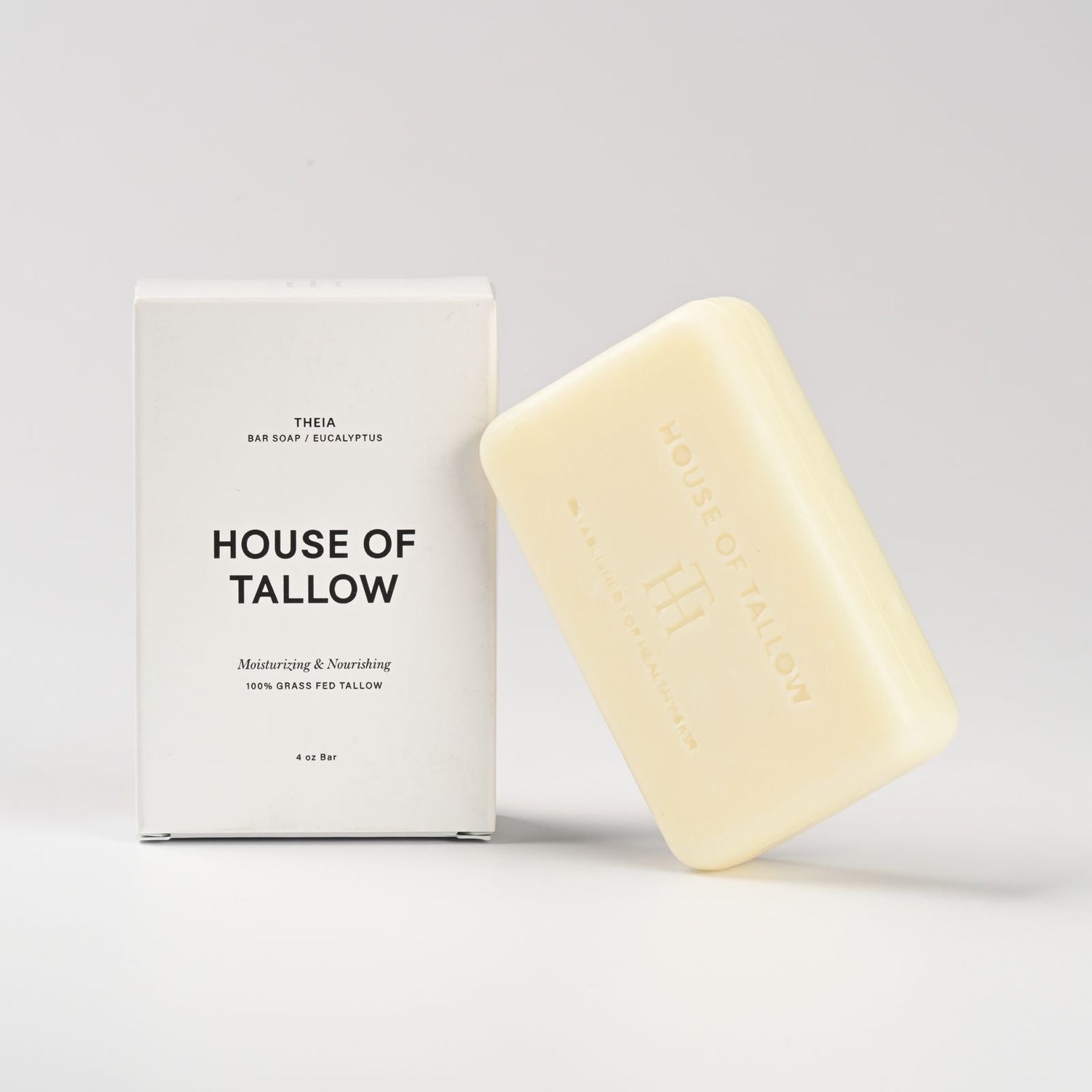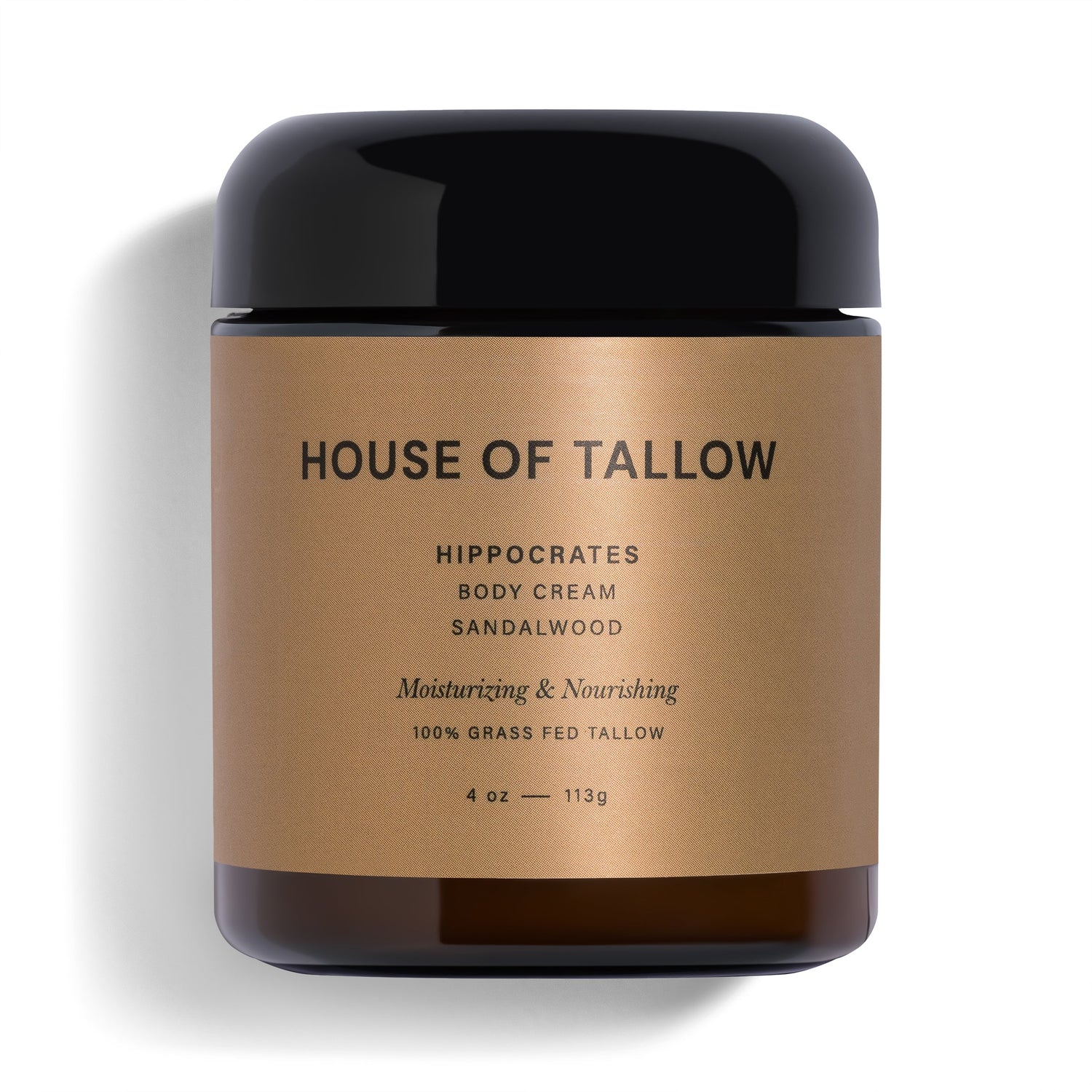Your skin's pH is crucial for maintaining its health, typically staying between 4.5 and 5.5. Disrupting this balance can lead to dryness, irritation, or bacterial growth. Tallow, a natural fat derived from animals, is an effective pH-balancing ingredient due to its similarity to human skin's lipids. Here's a quick comparison of tallow and other common pH balancers:
Key Points:
- Tallow: Matches skin's pH (5.0-6.5), deeply hydrates, and supports the skin barrier. Best for dry or sensitive skin. Not vegan-friendly.
- Niacinamide: Regulates oil and refines pores (pH 5.0-7.0). Ideal for oily or acne-prone skin but offers limited hydration.
- AHAs/BHAs: Exfoliate and renew skin (pH 3.0-4.0). Great for aging or congested skin but may cause irritation.
- Hyaluronic Acid: Hydrates the skin's surface (pH 5.0-8.0). Works for all skin types but lacks barrier support.
Quick Comparison Table:
| Ingredient | pH Range | Benefits | Best For | Limitations |
|---|---|---|---|---|
| Tallow | 5.0-6.5 | Deep hydration, barrier repair | Dry, sensitive, mature skin | Not vegan-friendly |
| Niacinamide | 5.0-7.0 | Oil regulation, pore refinement | Oily, acne-prone skin | Limited hydration |
| AHAs/BHAs | 3.0-4.0 | Exfoliation, cell renewal | Aging, congested skin | Potential irritation |
| Hyaluronic Acid | 5.0-8.0 | Surface hydration | All skin types | Minimal barrier support |
Tallow stands out for its ability to mimic human sebum, providing long-lasting hydration and pH balance while supporting the skin barrier. However, it may feel heavier than synthetic alternatives and is not suitable for vegan preferences. Use it consistently for noticeable results in about 28 days.
Tallow as a pH-Balancing Agent
What's in Tallow
Tallow aligns well with the skin's natural chemistry, thanks to its unique blend of components that help maintain pH balance. Its fatty acids - oleic, palmitic, and stearic - play key roles, melting at skin temperature for easy absorption and effective results.
| Component | Function |
|---|---|
| Oleic Acid | Helps retain the skin's moisture barrier |
| Palmitic Acid | Strengthens the skin's structure |
| Stearic Acid | Aids in supporting the skin's protective barrier |
| Vitamins A, D, E, K | Offers antioxidant protection |
Tallow's pH Effects
Tallow supports the skin's ideal pH by strengthening the lipid barrier and reducing inflammation [1][2]. Products like House of Tallow's body creams highlight how tallow-based formulations can outperform synthetic alternatives, making it a standout option for pH-balancing needs.
In addition to keeping pH levels in check, tallow provides extra skin-nourishing benefits through:
- Vitamin A
- Vitamin E
- Vitamin D
- Vitamin K
Unlike synthetic options that often offer short-term effects, tallow works naturally with the skin to maintain long-lasting balance [2].
Tallow vs. Other pH Balancers
Ingredient Comparison Chart
Tallow stands out due to its fatty acid profile, which supports both hydration and skin barrier repair. Here's how it compares to other common pH balancers:
| Ingredient | pH Range | Primary Benefits | Best For | Limitations |
|---|---|---|---|---|
| Tallow | 5.0-6.5 | Deep hydration, barrier repair, soothing | Dry, sensitive, mature skin | Not vegan-friendly |
| Niacinamide | 5.0-7.0 | Oil regulation, pore refinement | Oily, acne-prone skin | Limited hydration |
| AHAs/BHAs | 3.0-4.0 | Exfoliation, promotes cell renewal | Aging, congested skin | Potential for irritation |
| Hyaluronic Acid | 5.0-8.0 | Surface-level hydration | All skin types | Does little for barrier support |
Strengths and Limitations
Tallow offers a multi-functional approach compared to single-purpose ingredients like niacinamide or hyaluronic acid. Its compatibility with skin biology allows it to hydrate deeply while supporting the skin's natural barrier.
Key Strengths:
- Contains conjugated linoleic acid (CLA), which provides natural antimicrobial benefits [7].
- Helps maintain pH balance without compromising the skin barrier [7].
Notable Limitations:
- Can feel heavier than synthetic alternatives.
- Needs to be sourced carefully to ensure quality and effectiveness.
Tallow is particularly helpful for sensitive skin types. It hydrates while protecting the microbiome, avoiding the irritation sometimes caused by exfoliating acids.
Tallow Skin Care: Benefits and Results
sbb-itb-a1b9fc0
Production and Ethics
Tallow stands out not just for its compatibility with skin but also for its environmentally friendly production process, making it a strong choice for maintaining skin's pH balance.
Tallow Production Methods
Tallow used in skincare comes from rendering animal fat, typically from cattle. Grass-fed sources are often preferred due to their nutrient density and lower environmental impact [1]. Using low-temperature rendering techniques helps retain essential fatty acids and keeps higher levels of vitamins A, D, E, and K compared to traditional high-heat processing [1].
| Factor | Conventional | Sustainable | Benefit |
|---|---|---|---|
| Source | Feedlot cattle | Grass-fed cattle | Higher nutrient content |
| Processing | High heat | Low temperature | Better vitamin retention |
| Land Use | N/A | Less fertile land | Boosts soil health |
Resource Use Analysis
The environmental benefits of tallow production add to its role as a natural pH regulator. Grass-fed sourcing ensures a steady supply of fatty acids crucial for skincare. Research shows that tallow-based skincare products have a 25% smaller carbon footprint compared to synthetic pH balancers, thanks to energy-efficient processing and natural sourcing methods [8][2].
Some major environmental advantages include:
- Water Efficiency: Grass-fed systems consume 30% less water compared to irrigated plant-based alternatives [9].
- Land Utilization: While grazing requires space, grass-fed systems thrive on less fertile land unsuitable for crops. These systems also contribute to soil health and capture about 3.5 tons of carbon per hectare annually through grassland preservation [10].
Studies indicate that synthetic alternatives can have a carbon footprint up to five times larger than natural options like tallow [5].
Conclusion: Making an Informed Choice
Key Takeaways
When comparing tallow with synthetic pH balancers, its compatibility with the skin stands out:
Tallow's effectiveness lies in its close resemblance to human sebum, as highlighted in ingredient comparisons. Research shows its ability to balance pH is on par with synthetic options [1][2]. Its natural composition provides multiple benefits, thanks to skin-like lipids.
How to Use It
For the best results, stick to these recommended application methods:
| Time | Application | Notes |
|---|---|---|
| Morning | Apply to damp skin | Follow with SPF |
| Evening | Use after serums | Target dry areas |
Warm the product between your fingertips before gently patting it onto your skin for better absorption [2]. You should notice changes within about 28 days.
Keep in mind that while tallow can help balance your skin's pH, its success depends on using it consistently and choosing the right product for your needs.
FAQs
Is tallow better than hyaluronic acid?
Both tallow and hyaluronic acid are beneficial for skincare, but they work in different ways. Here's a quick comparison:
| Aspect | Tallow | Hyaluronic Acid |
|---|---|---|
| Hydration Method | Provides deep moisture with skin-like lipids | Attracts water to hydrate the skin's surface (can hold up to 1000x its weight in water) |
| Skin Compatibility | Mimics human skin lipids (50-55% saturated fatty acids) | Naturally found in skin but diminishes with age |
| Additional Benefits | Supports skin barrier and balances pH | Focuses mainly on locking in moisture |
The choice depends on your skin's needs. If you're looking for barrier support and nourishment, tallow is ideal. It helps maintain the skin's natural pH (around 5.5) and provides lasting care[2][4]. On the other hand, hyaluronic acid is great for improving surface hydration.
For the best results, layer tallow over hyaluronic acid. This combination allows tallow to penetrate deeply while hyaluronic acid keeps the surface hydrated[1][6][2]. Warming tallow products before use can also enhance absorption of their rich lipids[1][3].




